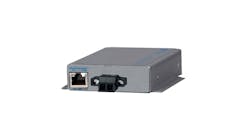Much has changed since DuPont’s DeLisle chemical processing plant in Pass Christian, Miss., was named the first Plant of the Year honoree by FieldComm Group in 2002. Market dynamics for chemical processors, refineries, utilities and other processing industries have changed with the times, ushering in an era of innovative technology for field communications. It led to more productivity, better cost efficiency and progress toward sustainable operations.
Plant of the Year winners have spanned six continents, representing the chemical processing, upstream and downstream oil and gas, steel, utilities and wastewater sectors. Each winner is an upper quartile performer—a company in the top 25% or at the 75th percentile of an industry. They’ve realized more than $125 million in total operating expense savings and an estimated $800 of operations expense savings per device.
Get your subscription to Control's tri-weekly newsletter.
A common denominator is the use of HART, HART-IP, WirelessHART or Foundation Fieldbus technologies in their plants. What’s unique about each plant is the way in which they integrated field communications with emerging technologies and procedures, such as completing entire digital transformations of plants, increasing reliability of communications and remote operations, adding predictive maintenance capabilities, creating sustainable operations, and, lately, the use of artificial intelligence in conjunction with fieldbus communications.
The feted plants showed innovative uses of real-time device diagnostics and process information integrated with control, information, asset management, safety systems and many other automation systems to lower operating costs, reduce unplanned downtime and improve operations. Meanwhile, winners consistently have above average scores for intelligent device adoption best practices.
In this article, we look back at a few of the success stories and how they mirrored many of the notable advancements in the process control sector overall.
An early digital transition adopter
The only two-time honoree, Danube Refinery of MOL Plc, located in Szazhalombatta, Hungary, was first recognized for its early endeavor into the then emerging trend of digital transformation. In the early 2010s, as wireless communication began to overtake tethered infrastructure in many sectors, industrial operations lagged. However, Gábor Bereznai, then head of maintenance engineering at MOL Danube, realized the benefits of integrating process instrument diagnostics and device utilization with a computerized maintenance management system (CMMS) and asset management system (AMS) with SAP process control, taking islands of systems that used to be separate and creating triggers for launching transmitters, control valves and positioners. “This was done by having the diagnostic system inform the CMMS about the valves. This data could then be used in morning meetings with our maintenance team and other staff to help us do risk assessments and identify other problems,” he said when the company won its second award in 2015.
Their digital transformation, which started in 2010, saw further developments five years later. After winning the 2010 Plant of the Year award, Bereznai and his colleagues launched expansions and multiple diagnostic and maintenance projects to bring similar benefits to other facilities at MOL Danube. At the time, they’d expanded the use of FieldComm Group technologies to more than 4,700 connected devices on 15 operating units, including 42 WirelessHART devices and six gateways connected to SAP-PM CMMS.
Additional smart devices and enhancement of valve diagnostics and predictive maintenance resulted in saving $350,000 per year on potential shutdowns with smart device monitoring. MOL Danube also set up a cross-functional, risk-assessment team that evaluated 20,000 device notifications per year.
The work that MOL Danube did inspired FieldComm Group to develop JSON-based descriptors for key HART commands. Known as DeviceInfo Files these will soon be available for download from FieldComm Group’s web page.
Doing things better
Mangalore Refinery and Petrochemicals Ltd. (MRPL) was at the forefront of India’s burgeoning oil, gas and petrochemical sector in 2018. Its “do things better” culture inspired it to be an innovator in hydrocarbon processing, adopting digital communications for process control and striving for more effective utilization of its resources and facilities.
Its use of FieldComm Group technologies was no different as it utilized installation savings and advanced diagnostics from more than 9,000 Foundation Fieldbus and 5,000 HART devices. At the time it was awarded the Plant of the Year, MRPL reported it saved more $6 million in project costs using those devices.
Beyond determining the technical advantages of Foundation Fieldbus and other FieldComm Group technologies, Basavarajappa Sudarshan, chief general manager for electrical and instrumentation at MRPL and project team leader, reported that he and his team had to convince colleagues, including operators and managers at MRPL, that migrating to digital communications would be worthwhile and wouldn’t hinder operations. They were successful.
MRPL started its journey into FieldComm Group technologies when it installed all-digital communications on its isomerization unit, including implementing all process control loops with Foundation Fieldbus with control in the field (CIF) functions, as well as HART transmitters used in its safety instrumented systems (SIS). On the strength of that success, MRPL also commissioned more than 10 process units, cogeneration plant and utilities at its refinery with Foundation Fieldbus, HART and WirelessHART.
Overcoming a hurricane
Designing, building, integrating, commissioning and starting up a new process plant is difficult enough, but dealing with a hurricane and flooding at the same time is just plain unreasonable. Nevertheless, that’s what Chevron Phillips Chemical Company LP achieved when it undertook its U.S. Gulf Coast (USGC) petrochemicals project and built a new unit at the plant for ethylene production. Located at its Cedar Bayou facility in Baytown, Texas, the plant has a design capacity of 1.725 million metric tons/year (3.8 billion pounds/year).
The USGC ethylene project started in 2012. Mechanical completion was done at the end of 2017, and commissioning was finished and startup began in March 2018. Near the end of construction, the Cedar Bayou facility also weathered Hurricane Harvey in August 2017, and used its smart HART and Foundation Fieldbus devices to help hasten the plant’s recovery.
The plant’s automation architecture consists of a distributed control system (DCS) with field control station (FCS) controllers and safety instrumented systems (SIS). “When Foundation Fieldbus and HART technology were chosen for this project, the DCS was selected because it offered an integrated asset management software platform to use with the digital information from the field instrumentation,” said Amit Ajmeri, DCS specialist for the USGC project at Chevron Phillips Chemical Company, when the project won the Plant of the Year designation in 2019.
Near the end of construction phase, Hurricane Harvey and its record-breaking rain halted the entire project. The plant experienced some flooding. Fortunately, most of the plant’s instruments, I/O, controls and field junction boxes were located above the flooding, and weren’t water damaged. The project team verified data for their healthy-device list before Harvey arrived, and confirmed most devices were still in the same healthy condition after the storm, so they didn’t have to perform any diagnostic checks for them.
Developing a disciplined device strategy
To understand the difference data-based decision-making can have on process performance, look no further than Dow’s Texas Operations (TXO) on the Gulf Coast. Originally built in the 1940s in Freeport, Texas, as a plant to extract magnesium from seawater, the chemical company’s TXO operations grew, and its homes are now in Deer Park, Freeport, Houston, La Porte, Seadrift and Texas City.
Throughout the 2010s, integrated data flows from some 50,000 smart instruments became central to its reliability objectives, helping to save tens of millions of dollars by boosting overall equipment effectiveness (OEE) and trimming instrumentation-related production losses by 80%, according to the company.
The largest integrated chemical complex in the western hemisphere, Dow-TXO accounts for 30% of its products sold in the U.S. While Dow-TXO standardized on HART smart instrumentation communications in 2000, the investment started to pay off in 2014 with the rollout of disciplined device integration reliability strategies and widespread implementation of a standardized instrumented asset management system (IAMS) approach,
Using IAMS, Dow-TXO commissioned and diagnosed more than 40,000 smart loops, achieving hundreds of thousands of dollars in savings. Dow also used IAMS to perform routine loop-checking and SIS validation on more than 5,000 loops and leveraged FieldComm Group’s FDI architecture to streamline device integration across the many varieties of smart instrumentation and device profile versions.
Leveraging the Industrial Internet of Things
HMEL’s Guru Gobind Singh refinery in Bathinda, Punjab, is an industrial anchor for the economic development of northern India. It sits at the northern terminus of a 1,017-km pipeline from Mundra, Gujarat, on India’s west coast, where tankers deliver the refinery’s raw materials from abroad. Formed in 2007 as a public-private partnership joint venture between Hindustan Petroleum Corp. Ltd. (HPCL, a government of India enterprise) and Mittal Energy Investments Pte. Ltd. (MEIL) of Singapore, HPCL-Mittal Energy Ltd. (HMEL) broke ground on the new refinery in 2008 and commenced operations in 2012.
From the start, process automation was at the heart of HMEL’s strategic vision of building a smart refinery. In addition to investments in state-of-the-art process automation, WirelessHART implementations at HMEL leveraged the Industrial Internet of Things (IIoT) to be part of a framework that HMEL calls the “digital refinery of the future.” Among the technologies it used to create its vision are wireless sensors to track the sounds made by steams traps and valves, temperature and vibration signatures of fin fan heat exchangers, and even real-time locations of plant personnel.
Leveraging data from WirelessHART acoustic sensors from Emerson enabled HMEL to monitor 138 control valves and pressure safety valves across eight refinery units for the passing of hydrocarbons. It helped proactively manage environmental issues, advance the realization of odorless operations, and recover the value of hydrocarbons that would otherwise be lost to flaring. The associated management application, part of Emerson’s PlantWeb Insight offering, alerts personnel to issues via persona-based email notifications.
HMEL also implemented methodologies in areas such as manufacturing execution systems, operator training simulation and corrosion inspection management. “We optimize operations using multitasking and cross-training of operations and maintenance personnel,” explained Jatinder Kansal, assistant general manager, instrumentation at HMEL, when the refinery was named Plant of the Year. “Its best-in-class integration framework and enterprise performance management and reporting systems further support informed decision-making.”
Kansal attributed the refineries successes not only to FieldComm Group technologies and multi-vendor interoperability, but also to leadership support and to cross-discipline teams, including those responsible for instrumentation, process, operations and IT.
Reducing configuration time
Because China-based Wanhua Chemical Group serves fast-moving and growing sectors, maintaining a competitive edge in its operations and gaining value from its control systems is of the utmost importance. That's why the company turned to FieldComm Group’s Foundation Fieldbus, HART and WirelessHART technologies to serve as the centerpiece of its digital transformation, company representatives said when it was named Plant of the Year.
Wanhua is one of the largest chemical product manufacturers in the world, serving four main industries: polyurethanes, petrochemicals, fine chemicals and emerging materials, such as those used in batteries and electronics. Installation of FieldComm Group’s technologies has been the basis of the plant’s improved operations, maintenance and asset productivity in real-time applications. In addition, FieldComm Group’s technology helped the company save tens of millions of dollars in operational costs ranging from reductions in configuration and commissioning times to remote maintenance capabilities.
Instrumentation with FieldComm Group’s technologies is prominent throughout the Yantai plant. “Wanhua Chemical’s Yantai Industrial Park features about 30 sets of production equipment with a production scale of nearly 500,000 I/O points,” explained Lee Caihua, director of instrumentation for Wanhua Chemical’s Yantai Industrial Park, via a translator. “Intelligent measuring instruments and valve positioners in the plant make full use of FieldComm Group’s Foundation Fieldbus, HART and WirelessHART technology, which operate in up to 180,000 I/O points and account for 96% of the analog instruments and valves.”
Wanhua Chemical’s representatives told Control in 2022 there were several value-added benefits to using FieldComm Group’s technologies at Yantai Industrial Park. Intelligent instruments provided valuable health information about the plant, which was integrated with control and asset management systems to save time during commissioning and throughout the plant’s life. “By using Foundation Fieldbus and HART instruments and AMS, [we] reduced commissioning time, and provided more efficient and dependable operations,” Lee said.
Thanks to a 60% reduction in configuration time, Lee added the plant saved an estimated $3 million.
Adding artificial intelligence to the mix
Advanced digital technologies—particularly HART-enabled digital diagnostic tools and predictive analytics combined with artificial intelligence (AI)—support the transition from time-based maintenance to condition-based maintenance at Japan-based Daikin Industries Ltd.’s Kashima plant. Daikin, the only global manufacturer of both air conditioning equipment and refrigerants, was the most recent Plant of the Year honoree, and its creative use of AI integrated with FieldComm Group technologies earned it the distinction.
The AI system is an anomaly prediction detection system that's used to continuously monitor process data via a data server. AI detects abnormal behavior in processes. Past operations data is used as big data, and AI learns normal behavior of the plant. Based on that learning, it accurately predicts signs of small anomalies in current sensor values, and addresses potential problems to avoid sudden production shutdowns.
Although 25% of the devices at the Kashima plant were HART compatible, the systems were not. Daikin chose a Fast Ethernet-based HART converter to utilize HART information, making it easy to install in various DCS/PLCs without affecting the existing control system. To create a more advanced environment, Daikin selected the AI to detect wear and tear and corrosion on control valves and blocked instrument lines in real-time. By using AI to learn process values, the results from sophisticated diagnostic algorithms were verified.
However, Daikin officials are quick to point out that the success of AI depends on the accuracy of data it receives. Online anomaly detection systems require accurate process data, especially in batch processes. That's where HART devices made a difference, Masumi Yoshida of the engineering department at Daikin Industries, explained last year.
“The HART signals of each device are wonderful data packed with the know-how of each device manufacturer. By having AI learn this along with various process data in the plant, it's more likely to be able to learn various signs of equipment anomalies,” he said.
Soon, we'll see more ways future Plant of the Year honorees create efficiencies and costs savings with Foundation Fieldbus, HART, and WirelessHART technologies.






